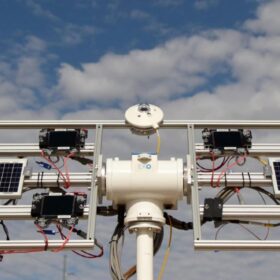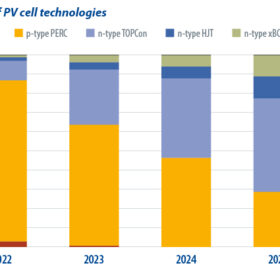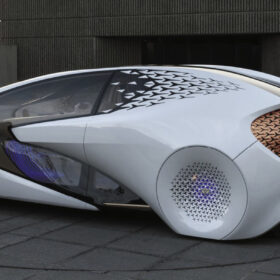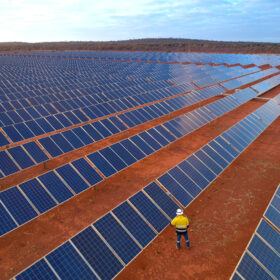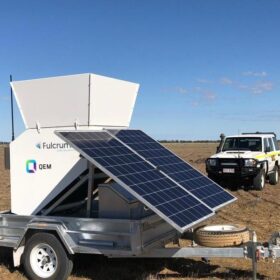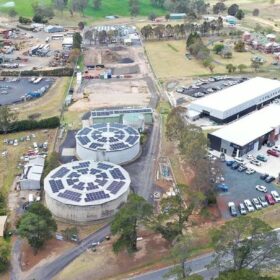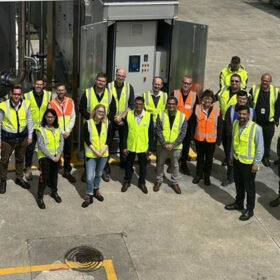US startup developing perovskite-silicon tandem panels with 26% efficiency
Tandem PV has secured capital to advance its four-terminal perovskite-silicon tandem module technology and move closer to first manufacturing. The company claims its products maintain 80% of the initial performance after 25 years.
Weekend read: The writing’s on the wall for p-type
The shift from positively doped, “p-type” to negatively doped, “n-type” solar technology has sparked manufacturing expansion, says S&P Global’s Jessica Jin.
New solid state battery charges in minutes, lasts for thousands of cycles
A team of researchers in the United States have developed a new lithium metal battery that can be charged and discharged at least 6,000 times — more than any other pouch battery cell — and can be recharged in a matter of minutes.
Carnegie trials ocean energy technology in offshore setting
Western Australian renewables company Carnegie Clean Energy has launched an offshore trial of its ocean energy generation technology as it seeks to advance the development of a wave converter system specifically designed for offshore energy demand applications.
DeGrussa solar and battery hub labelled ‘brilliant success’ as decommissioning begins
The largest integrated off-grid solar and battery storage facility in Australia when it was deployed, the DeGrussa solar and battery hub in remote Western Australia has reached end of life with asset owner Neoen confirming it is now planning to remove the more than 34,000 solar panels and rehabilitate the site.
Solar fence stands out in Gridcog simulation
Solar fences are beginning to gain traction in European and North American markets and now data provided by energy software service provider Gridcog suggests that vertical bifacial solar could be technically and economically viable in Australia.
Machine learning algorithm for inverter fault monitoring, prediction
The new algorithm monitors the inverter subsystems and sends alarms when maximum and minimum values are reached. It analyses data and categorises variables according to historic values.
Enel inks deal to acquire 1 GW wind and solar project
Enel Green Power Australia has boosted its renewables portfolio by striking a deal with Queensland-headquartered minerals explorer QEM to purchase what would be one of the state’s biggest renewable energy farms in a deal worth more than $7 million (USD 4.68 million).
NSW council switches on solar in search for 100% renewables
Bega Valley Shire Council in New South Wales has announced a significant milestone in its journey towards 100% renewable energy by 2030 with the successful export of power from its newest solar energy site to the national grid.
Fonterra reveals high-temp industrial heat pump
New Zealand-based dairy producer Fonterra has started operating a new heat pump in combination with a solar thermal facility. The hybrid project transforms excess heat from chillers and compressors into a heat source for industrial use.
